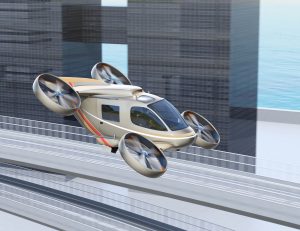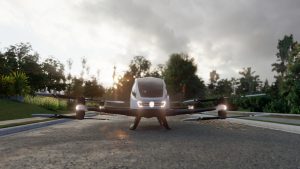If the emerging Advanced Urban Air Mobility (AUAM) industry falters, it won’t be because the technology isn’t ready or that regulators aren’t building a framework to ensure that air vehicles in development won’t meet the highest safety standards.
The future of AUAM will turn on having the right infrastructure to support operations, including assurances to the public that air taxis are ready to begin commercial operations—which is why aviation industry professionals increasingly are focusing on this critical phase of the industry’s maturation.

The impetus is two-fold: first, aviation regulators on both sides of the Atlantic expect the first eVTOL on-demand ride-share services to start operations by 2024, with the first designs certified next year, and second, eVTOL aircraft could significantly increase air traffic in urban environments because of the noise reduction and environmental advantages they will offer compared to traditional helicopters. This will require an infrastructure capable of supporting the special requirements of electrically-powered aircraft and up-tempo flight operations and also satisfy the most demanding safety concerns.
A major component of AUAM will be vertiports, which could be a landing pad atop a Manhattan skyscraper—wind conditions permitting—or a parking lot in a Los Angeles suburb. They will serve as nodes in or near the heart of cities for aircraft passenger boarding and disembarkation and cargo, much as buses and shuttle vans now transport passengers between drop-off points and airports on the outskirts of large metropolitan areas.
Moreover, urban planners expect vertiports to share many of the characteristics of today’s heliports, such as designated areas for takeoff and landing, parking, and various support facilities. The biggest difference between conventional heliports and airports and vertiports is that the latter will be designed to accommodate a wide range of aircraft designs that may be piloted or, some years later, fully autonomous.
Building vertiports may require radically different approaches than those associated with today’s airports or heliports, according to Jonathan Daniels, CEO and founder of Praxis Aerospace Concepts International.
For starters, they will need to support the high degree of automation and electrification embedded in eVTOL aircraft, requiring a reliably consistent source of electrical power. Chances are that some vertiports will also be multimodal hubs, enabling passengers to seamlessly transition from one transportation mode to another.

Further, the means by which an eVTOL aircraft approaches the vertiport could be tailored to AUAM operations. For example, it could evolve from today’s visual flight rules (VFR) and instrument flight rules (IFR) to “digital flight rules” that rely on both automated air-to-ground and air-to-air communications, the goal being to ensure safe separation and also prioritize aircraft to assigned landing pads in the right sequence. In addition, vertiports could be highly automated to support a high throughput of takeoffs and landings.
An air traffic management system attached to vertiports may turn out to be another imperative, according to Ray Adams, chairman and Executive Director of Urban Low-Altitude Transport Association. Without a central authority to direct air traffic, the level of passenger and aircraft congestion could pose problems for future operations.
With the start of eVTOL operations rapidly approaching, original equipment manufacturers are looking to regulators to develop standards for vertiports, as well as the vehicles themselves, that OEMs can incorporate into their aircraft design processes, noted Aero Product Manager Torre Meliska at Wisk, which is backed by Boeing and also Kitty Hawk, the aviation start-up founded by Google’s Larry Page.
For example, batteries for electric vehicles are typically contained in a steel casing, making fire-suppression potentially difficult. Standardizing certain manufacturing practices and ensuring that first responders are knowledgeable and equipped to deal with eVTOL emergencies will be critical to the future of the industry, according to Michael Gorin, program manager for emerging issues at the National Fire Protection Association.
Another key element in building a successful infrastructure is a close relationship with the local municipality, since communities are capable of forcing airports, heliports—and presumably vertiports—to conform to what’s acceptable and what’s not. Jeff Hyman, CEO of Helo Holding Inc., which operates a bustling heliport in Kearney, N.J., directly across the Hudson River from Manhattan, is optimistic that the advantages of eVTOL aircraft in terms of reduced noise and pollution will alleviate possible public concerns often aimed at takeoffs and landings of helicopters and private jets adjacent to municipalities.
##
Editor:
Learn more about designing safe and quiet eVTOL vehicles in this whitepaper.